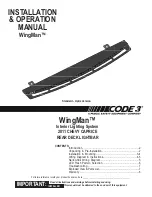
When preparing to tow, and before
driving away, be sure to check the
following:
The vehicle has been properly
serviced, and the tires, brakes,
suspension, cooling system, and
lights are in good operating
condition.
Your vehicle tires and spare are
properly inflated (see page
),
and the trailer tires and spare are
inflated as recommended by the
trailer maker.
The added weight, length, and
height of a trailer will affect your
vehicle’s handling and performance,
so driving with a trailer requires
some special driving skills and
techniques.
All weights and loads are within
limits (see pages
and
).
The trailer has been properly
serviced and is in good condition.
The hitch, safety chains, and any
other attachments are secure.
All items in or on the trailer are
properly secured and cannot shift
while you drive.
For your safety and the safety of
others, take time to practice driving
maneuvers before heading for the
open road, and follow the guidelines
below.
Drive slower than normal in all
driving situations, and obey posted
speed limits for vehicles with trailers.
If you have an automatic
transmission, use D position when
towing a trailer on level roads. D is
the proper shift lever position to use
when towing a trailer in hilly terrain.
(See ‘‘
’’ on the next
page for additional gear information.)
173
174
212
CONTINUED
3
Pre-Tow Checklist
Driving Saf ely With a Trailer
Towing a Trailer
Towing Speeds and Gears
Driving on Hills
D
riv
ing
177
07/04/26 18:59:36 31SCV650 0182
















































